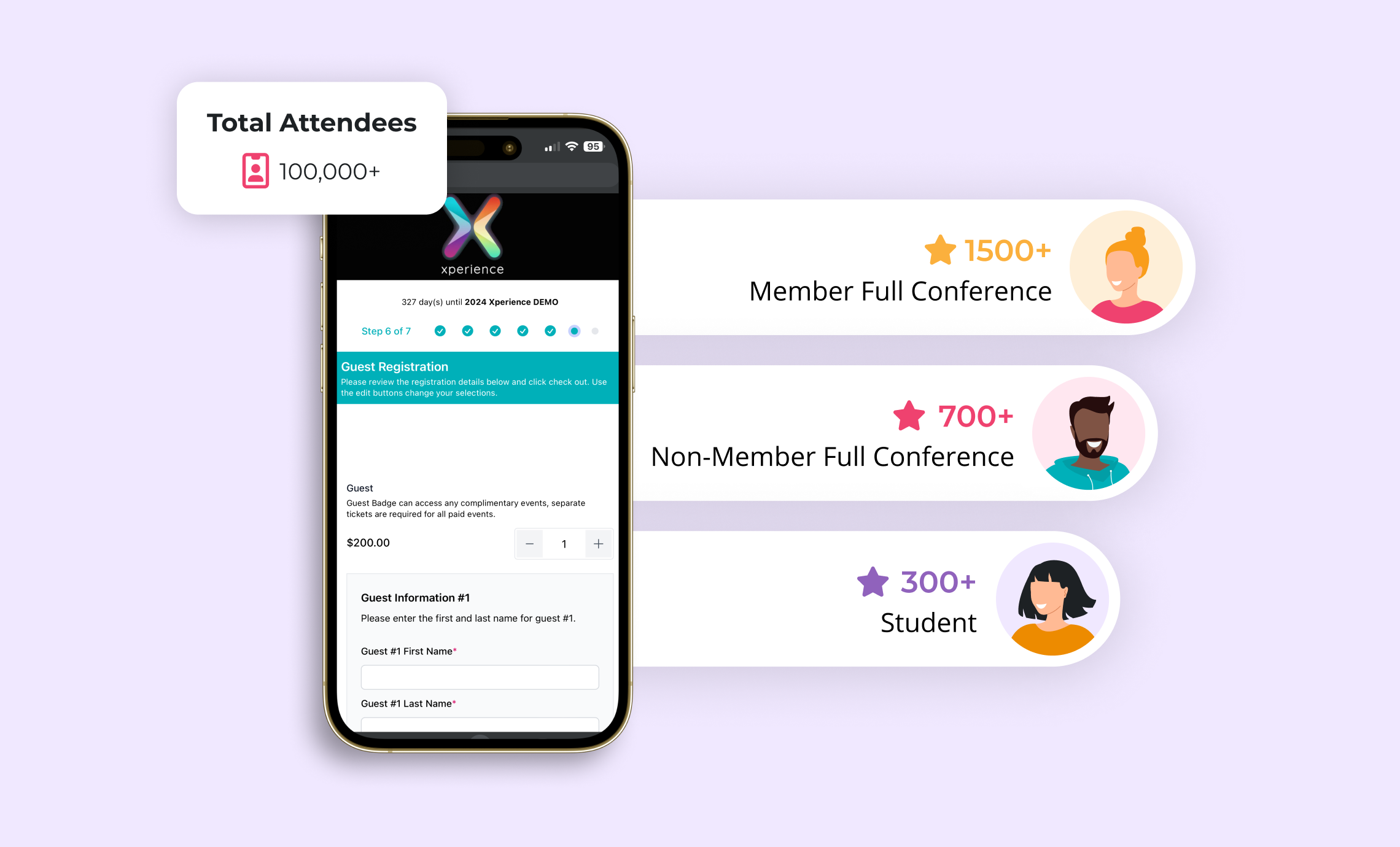Measuring event success is an important step which shouldn’t be overlooked. Measuring success ensures you’re delivering on expectations for all of your key stakeholders: attendees, exhibitors, speakers and more.
Regardless of your event goals (increasing brand awareness, driving revenue, improving attendee satisfaction or others), here are 9 important KPIs to consider when measuring event ROI:
1. Registration rates
Evaluating registration rates over the weeks leading up to your event can help determine whether you need to amp up marketing efforts, direct messaging or targeting to other segments, or hold steady. Take a look at your year-over-year tracking for attendance to see if you’re pacing slower or faster, as well as the number of returning attendees you’re drawing. These can all be windows into how your attendee marketing is performing, what sort of attendance you can expect on event day, and whether your programming is resonating with prospective attendees.
2. Event check-in
This key metric can give you an indicator of how many many attendees have arrived and checked-in on site at your event. Comparing this with the number of total registrants can be a valuable metric as a large difference between these two numbers can indicate that you may need to evaluate why you are losing attendees between registration and check-in.
3. Attendee (or exhibitor) Satisfaction surveys
Sending your attendees or exhibitors post event surveys can give you key insights into what they liked (or didn’t), what parts of your event they found most valuable, or what topics, activities or speakers they’d like at the next event. These responses can help shape future events that deliver on attendee and exhibitor expectations.
4. Net Promoter Score (NPS)
A close cousin to satisfaction surveys, the NPS is a score indicating how likely someone would recommend your event to friends. You can calculate your NFS by asking respondents, On a scale of 1-10, how likely are you to recommend this event to a friend or colleague? “Promoters” are loyal evangelists for your event (9-10 score), “passives” are satisfied constituents, but are unmotivated to promote (7-8 score), and “detractors” can damage your brand (1-6 score). The Net Promoter Score (NPS) is determined by subtracting the percentage of customers who are detractors from the percentage who are promoters. Your score is one indicator of the value of your event to attendees and can be an important metric to key stakeholders.
5. Social Media metrics
Social activity can be an indicator of brand awareness, impressions made, and overall reach. Analyze the number of attendees who posted or tweeted online. Were they socially engaged before, during and after the event? How many social media mentions did your event or speakers receive via your handle or hashtag? Mentions can indicate your event’s overall social media “friendliness”, whereas social media engagement measures reactions to a post or tweet by liking, sharing or retweeting. This metric can indicate the resonance of your sessions, content and speakers with attendees.
6. Marketing ROI
Determining which efforts worked and which didn’t can help you pivot during your event marketing process as well as inform your marketing for future events. Tracking clicks and opens with email, registrations by source codes, CPMs on digital advertising, and visits to, and activity on, your website can all give clues into what attendees find compelling. Take a look at your abandoned shopping cart activity as well. Is your messaging on-point to capture these attendees with additional marketing or offers?
7. Attendee Behavior
How did your attendees vote with their feet? Seeing which sessions were most attended and which exhibitors were most visited can help you determine which topics resonated and which exhibitors benefitted most from your event. Knowing this can help target sales efforts to similar organizations as well as help with re-sign efforts for future events.
8. Revenue and Expenses
Many consider this the most important KPI. Take a look at your financials. How did your initial revenue goal measure up to the actuals? Did you generate enough attendance or exhibitor revenue to cover your costs? Were you realistic about the benchmarks you set? Gross revenue can indicate how much demand there may be for your type of event. Reviewing your revenue by promo code can also give clues into what’s resonating with attendees.
9. Intangible Measures
Not all KPIs are easily measured, but are important to consider when determining event success:
- Existing business relationships strengthened. Long-term revenue from loyal customers is valuable to any organization. Calculate their worth by how long you expect to have their business and the value of that contract.
- New opportunities created. New leads and pipeline are the goals for many event. Figure out how much marketing costs per new lead, the conversion time from lead to contract, and the value of an average contract. This measure can give you a value for your new relationships gleaned from your event.
Deciding which of these KPIs matter to you will depend on the goals you’ve set for your event and determine how you can measure those efforts. Putting in place mechanisms by which to measure these goals will help you understand what you’re doing right and what you can do better.
Looking for more event solutions and advice? Contact us


